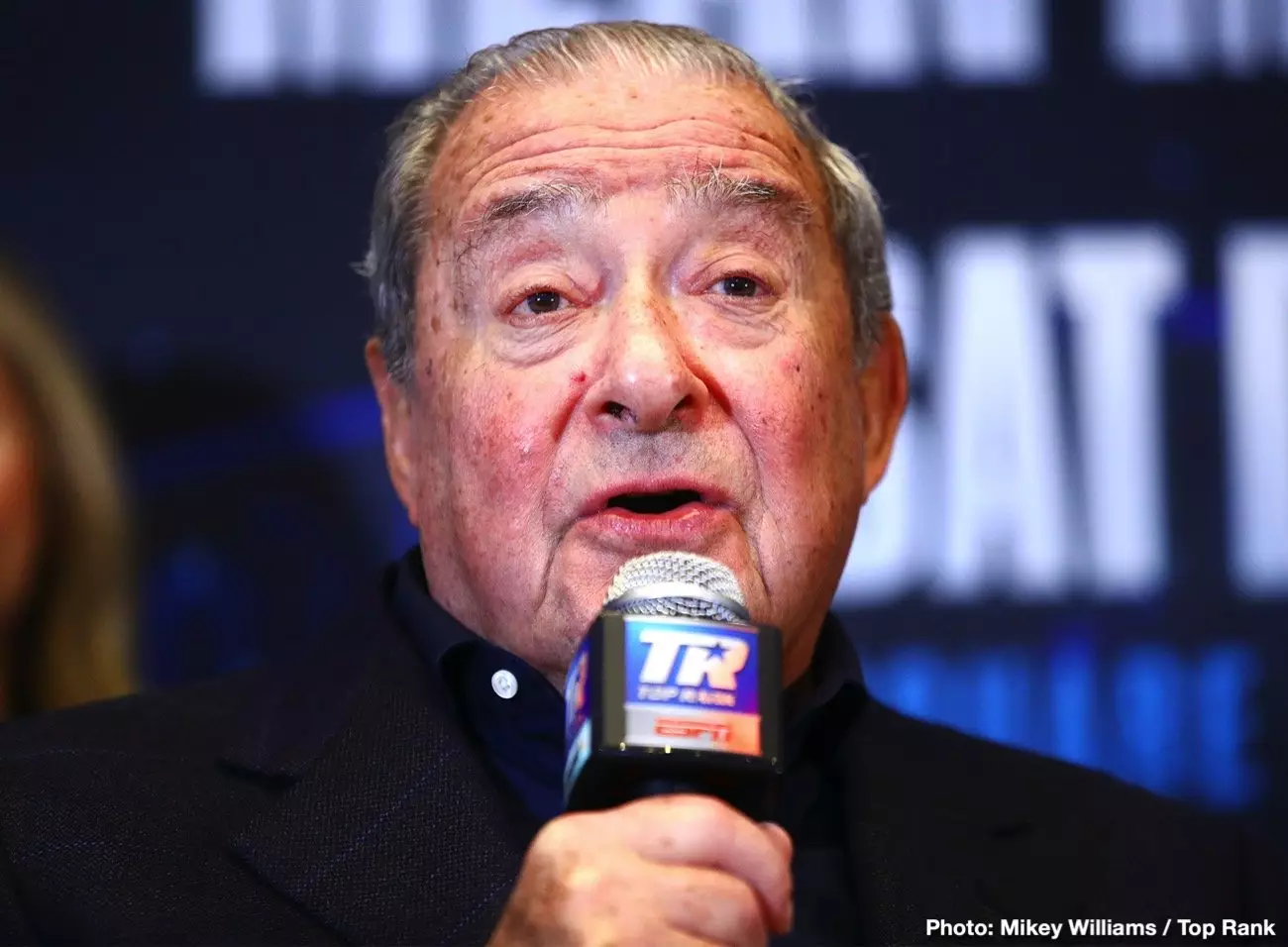In a rapidly evolving sporting landscape, the pay-per-view (PPV) model for boxing is encountering significant obstacles. Top Rank promoter Bob Arum has expressed hesitance regarding the upcoming March 15th clash between WBO light welterweight champion Teofimo Lopez and former IBF champion Subriel Matias being broadcast on PPV. Arum’s concerns stem not only from rampant piracy but also from the recognition that neither Lopez nor Matias has proven to be a significant draw for audiences. In an industry where financial viability is often hinged on customer interest, this fight represents a prime example of how mismatched expectations and realities can lead to challenges.
The Shift in Audience Engagement
Teofimo Lopez, once celebrated as a two-division world champion, has struggled to maintain his foothold in the boxing hierarchy after suffering a disappointing loss to George Kambosos Jr. His post-defeat trajectory has been marred by inconsistent performances that have seemingly alienated potential fans. With his upcoming title defense against the formidable puncher Matias, questions arise regarding Lopez’s ability to attract a wide audience. Underneath Lopez’s flashy persona lies the stark acknowledgment that high-profile victories alone do not guarantee sustained popularity or viewership.
The Questionable Value of PPV Events
Arum’s perspective sheds light on a critical issue plaguing the boxing industry: the over-utilization of the PPV model. He argues that the profitability of live events should not necessarily dictate the shift toward directing non-blockbuster fights into a PPV format. While historical precedents showcased high-stakes matchups reserved for paywall exclusivity, these expectations have become distorted in today’s market. Events lacking the drawing power of star-studded fights, like Lopez versus Matias, are being proposed for PPV, leading to disappointing revenue and audience engagement.
This paradigm shift reflects a broader trend of miscalibrated promotional strategies that place fighters on PPV too early in their careers. The example of Gervonta Davis illustrates this issue, as he faced off against lesser opponents in premium slots while struggling to secure significant buy numbers. The mismatch between promotional ambitions and market realities can ultimately result in long-term damage to both fighter brands and promotional entities.
The fight between Teofimo Lopez and Subriel Matias raises crucial questions about the future of boxing promotion in the wake of declining PPV sales. In a world where piracy and lack of audience engagement pose serious threats to profitability, reconsidering the traditional business model of boxing is paramount. Promoters must reevaluate what constitutes a worthy PPV matchup and aim to build sustainable fan bases for fighters before thrusting them into high-stakes, paywalled events. Only by adapting to the shifts in consumer behavior and embracing a more strategic approach can boxing hope to thrive in this competitive landscape. Reimagining how events are marketed, priced, and consumed may well be the key to revitalizing a sport that faces ongoing challenges from evolving viewing habits and increasing marketplace competition.

